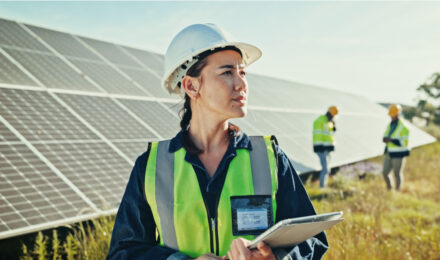Experts from all around the globe predicted a coming slowdown of the world economy, but despite prevalent negative attitudes, we continue to see a robust economy that keeps finding new ways to grow. The global GDP growth accelerates at a pace continually exceeding expectations. Currently, the United States leads the pack as the all-star performer, but whenever they have fallen behind, other regions have picked up the slack.
The Risks to the World Economy
The biggest friction that faces the world economy right now is the potential geopolitical risks. In the last five years, the risk has exploded onto the scene with the polarizing war between Israel and Palestine, and the war facing Russia and Ukraine. Many investors also express concern about the possible threat of a US-China conflict. We see a significant increase in funds designed to exclude China from emerging market investments. One has to wonder, however, why should they be emerging when they’re the second biggest economy?
Even the coming US election on November 5, 2024, will be rife with geopolitical risks. As we saw back in the January 6th Capitol Attack, there exists a deeply unsettled feeling in the US with a great deal of turbulence.
Gloomy Predictions from Big Financial Institutions
The World Bank, the International Monetary Fund, and the Organisation for Economic Co-operation Development all gave gloomy predictions about the world economy. One of the biggest concerns they say comes from the global economy never recovering from its pre-pandemic cruising speed. The World Bank points out how in 2024 and 2025, an estimated 60% of all countries, which make up 80% of the world population, are expected to grow by less than their average rate from the 2010s.
We do still have reasons for optimism. For example, the economic powerhouses continue to drive us forward. China has begun to drag the world economy down, but the United States keeps us moving forward. When economists examined the data overall, they discovered that the world economy was on pace to grow 2.7% in 2024.
This growth exceeds the original expectations set at 2.4%, largely due to the better-than-expected performance of the US economy. Global output continues on at a rapid pace that may eventually slow down further as China’s lack of growth slows the rest of the world down.
Adapting After COVID
Overall, we continue to see positive momentum swinging in the right direction, but many economists worry that this season of unsettled peace won’t last. In 2022, inflation peaked at 9.4%. Much of this excessive inflation had to do with health emergency lockdowns, which sent prices soaring due to supply chain issues. Eventually, we adapted, and global inflation today sits at around 6.7%.
Many worry that this continued inflation will play a role in the coming slowdown as consumers have less money to spend on goods. The IMF predicts inflation could eventually drop to 2.7% by 2025.
Sputtering Economic Engines
The United States holds strong and keeps us powering forward as Europe and China begins to sputter. Unlike the other countries in the world economy, the United States has continued on its projected path after COVID-19. The expected growth in 2024 is 2.7%, which is good compared to other advanced countries only expected to grow 1.7%.
Unfortunately, even the US has begun to show signs of a slowdown. In the first three months of 2024, the US only grew 1.4%. Inflation has been the greatest threat to the US in recent memory, but a new threat has begun to emerge. The growing threat now has become unemployment. We see a growing number of people becoming unemployed.
The labor market shows signs of cooling. Recent figures put it at 4.1% unemployment. This rate is despite the US economy adding 206,000 jobs to the labor market. Reaching that level is the highest unemployment rate we’ve seen since 2021. Still, the current rate poses no immediate threat of a fall off a cliff, but it could have broader implications against the world economy if they start to slow down.
Coming out of the Slow Lane
The global economy has had to spend time stabilizing because of the pandemic. Luckily, we appear to be in more of a soft landing. Many express optimism that we could have gone through far worse during the pandemic economically than what we did. Still, one out of every four developing countries will be poorer this year than in years past. Even the biggest economies are set to grow at a much slower pace than what we saw pre-pandemic.
To continue to aid the world economy, governments should work to foster productivity, innovation, and entrepreneurship. Closer international cooperation could also help thrust us forward in the coming years. After the fall of the Berlin Wall, we saw this happen before where goods, capital, and ideas made it across borders. This cooperation led to unprecedented growth over the last 25 years.
Due to geopolitical issues happening throughout the world right now, we see more and more closing off of this openness. In recent years, international cooperation has fractioned off. You see Russia and China on one side, and the United States with its European allies on the other side.
Still Reasons to Celebrate
Economists still have reasons to celebrate because, despite the challenges facing us all, we managed to avoid a global recession. That happened in the face of the steepest rise in global interest rates since the 1980s. Unfortunately, the economic growth on the global level still remains too little to reduce global poverty and increase development.
What Will It Go Now?
No one knows what will happen with the world economy, but many reputable experts continue saying we are due for a slowdown. Right now, we remain stuck in the slow lane, and we want to turn ourselves into the fast lane, but with geopolitical risks and other issues abound, no one knows what could happen in the coming years. It may be a good idea to keep a rainy day fund.
Experts from all around the globe predicted a coming slowdown of the world economy, but despite prevalent negative attitudes, we continue to see a robust economy that keeps finding new ways to grow. The global GDP growth accelerates at a pace continually exceeding expectations. Currently, the United States leads the pack as the all-star performer, but whenever they have fallen behind, other regions have picked up the slack.
The Risks to the World Economy
The biggest friction that faces the world economy right now is the potential geopolitical risks. In the last five years, the risk has exploded onto the scene with the polarizing war between Israel and Palestine, and the war facing Russia and Ukraine. Many investors also express concern about the possible threat of a US-China conflict. We see a significant increase in funds designed to exclude China from emerging market investments. One has to wonder, however, why should they be emerging when they’re the second biggest economy?
Even the coming US election on November 5, 2024, will be rife with geopolitical risks. As we saw back in the January 6th Capitol Attack, there exists a deeply unsettled feeling in the US with a great deal of turbulence.
Gloomy Predictions from Big Financial Institutions
The World Bank, the International Monetary Fund, and the Organisation for Economic Co-operation Development all gave gloomy predictions about the world economy. One of the biggest concerns they say comes from the global economy never recovering from its pre-pandemic cruising speed. The World Bank points out how in 2024 and 2025, an estimated 60% of all countries, which make up 80% of the world population, are expected to grow by less than their average rate from the 2010s.
We do still have reasons for optimism. For example, the economic powerhouses continue to drive us forward. China has begun to drag the world economy down, but the United States keeps us moving forward. When economists examined the data overall, they discovered that the world economy was on pace to grow 2.7% in 2024.
This growth exceeds the original expectations set at 2.4%, largely due to the better-than-expected performance of the US economy. Global output continues on at a rapid pace that may eventually slow down further as China’s lack of growth slows the rest of the world down.
Adapting After COVID
Overall, we continue to see positive momentum swinging in the right direction, but many economists worry that this season of unsettled peace won’t last. In 2022, inflation peaked at 9.4%. Much of this excessive inflation had to do with health emergency lockdowns, which sent prices soaring due to supply chain issues. Eventually, we adapted, and global inflation today sits at around 6.7%.
Many worry that this continued inflation will play a role in the coming slowdown as consumers have less money to spend on goods. The IMF predicts inflation could eventually drop to 2.7% by 2025.
Sputtering Economic Engines
The United States holds strong and keeps us powering forward as Europe and China begins to sputter. Unlike the other countries in the world economy, the United States has continued on its projected path after COVID-19. The expected growth in 2024 is 2.7%, which is good compared to other advanced countries only expected to grow 1.7%.
Unfortunately, even the US has begun to show signs of a slowdown. In the first three months of 2024, the US only grew 1.4%. Inflation has been the greatest threat to the US in recent memory, but a new threat has begun to emerge. The growing threat now has become unemployment. We see a growing number of people becoming unemployed.
The labor market shows signs of cooling. Recent figures put it at 4.1% unemployment. This rate is despite the US economy adding 206,000 jobs to the labor market. Reaching that level is the highest unemployment rate we’ve seen since 2021. Still, the current rate poses no immediate threat of a fall off a cliff, but it could have broader implications against the world economy if they start to slow down.
Coming out of the Slow Lane
The global economy has had to spend time stabilizing because of the pandemic. Luckily, we appear to be in more of a soft landing. Many express optimism that we could have gone through far worse during the pandemic economically than what we did. Still, one out of every four developing countries will be poorer this year than in years past. Even the biggest economies are set to grow at a much slower pace than what we saw pre-pandemic.
To continue to aid the world economy, governments should work to foster productivity, innovation, and entrepreneurship. Closer international cooperation could also help thrust us forward in the coming years. After the fall of the Berlin Wall, we saw this happen before where goods, capital, and ideas made it across borders. This cooperation led to unprecedented growth over the last 25 years.
Due to geopolitical issues happening throughout the world right now, we see more and more closing off of this openness. In recent years, international cooperation has fractioned off. You see Russia and China on one side, and the United States with its European allies on the other side.
Still Reasons to Celebrate
Economists still have reasons to celebrate because, despite the challenges facing us all, we managed to avoid a global recession. That happened in the face of the steepest rise in global interest rates since the 1980s. Unfortunately, the economic growth on the global level still remains too little to reduce global poverty and increase development.
What Will It Go Now?
No one knows what will happen with the world economy, but many reputable experts continue saying we are due for a slowdown. Right now, we remain stuck in the slow lane, and we want to turn ourselves into the fast lane, but with geopolitical risks and other issues abound, no one knows what could happen in the coming years. It may be a good idea to keep a rainy day fund.



